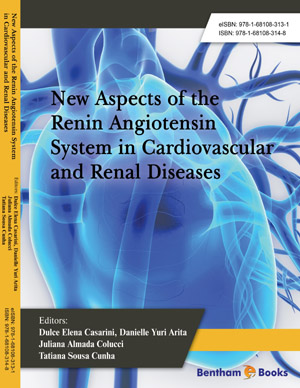Abstract
Recently, the continuing and increasing interest in the renin angiotensin system (RAS) after discovery of new peptides and enzymes, has been stimulating us to review the new concepts described in the literature. The classical RAS is a system in which renin acts on angiotensinogen (Agt) to form angiotensin I (Ang I) that is cleaved to the active peptide angiotensin II (Ang II) by angiotensin converting enzyme (ACE). The Ang II pharmacological actions occur after their interaction with Ang II type 1 and type 2 receptors (AT1R; AT2R). In the last decade, a new concept of local tissue RAS systems has been described in different organs, and also intracellular RAS has been stated, allowing expansion of the concept of functions of this system as endocrine, paracrine, autocrine and intracrine. This first chapter provides brief overview on the history of the RAS components, circulating and tissue RAS, and outlines the physiological functions of the RAS major active substance, Ang II. Here, we also describe other bioactive angiotensins, such as Ang III, Ang IV, Ang (1-7), Ang (1-12), angiotensin A and alamandine. Moreover, we report the studies on ACE2 and chymase, enzymes identified during the last years. The recent advances in the understanding of the RAS will provide new opportunities to treat and prevent hypertension and cardiovascular diseases.
Keywords: ACE, ACE2, Alamandine, Angiotensin A, Angiotensin converting enzyme 2, Angiotensin I-converting enzyme, Angiotensin II, Angiotensin III, Angiotensin IV, Angiotensin (1-7), Angiotensin (1-12), Chymases, Enzymes, RAS, Receptors, Renin, Renin angiotensin system.






















